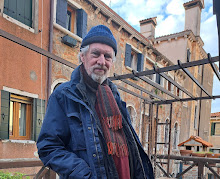Two current exhibitions address the Occupy movement, one in Austria and one in California. “Occupy Everything” and “Occupy Bay Area” take different approaches, however, based on different understandings of the movements that arose in 2011. (Caveat – this is not a review of shows I've not seen; it's a digest of PR.) The San Francisco show is diffident about the movement, and limited in its goals. Occupy has “generated both praise and condemnation”; a sensitive audience is warned that it is controversial. It is “a direct response to the financial instability, subprime mortgage crisis... [and] problems in the labor market.” Occupy Bay Area focuses on the political poster artists who message the politics and culture of the movement, supporting its goals and aspirations.
This sounds very modest and limited. Nevertheless, the Occupy Bay Area includes as well some record of the important underground history of occupation there, including the Free Speech Movement at University of California, Berkeley (1964–65); the San Francisco State University protests, to gain an Ethnic Studies program and Black Student Union demands (1968–69); the International Hotel eviction struggles in Manilatown (1968–77); the Occupation of Alcatraz by Native American Indians (1969–71); and the ARC/AIDS Vigil at City Hall (1985–95). All of these struggles used the tactic of occupation. The show disclaims any intention of being a “fully executed social history”; instead it is a testament of the power of images to evoke the emotional expression of popular and wide-spread sentiments.” Yes, well – even with the rapid back-pedaling, it sounds like a good job.
“Occupy Everything,” an exhibition organized by Oliver Ressler for “Regionale12” in St. Lambrecht, Austria, has a much shorter run, but it is conceptually more ambitious. The historical sequence of 2011 is right – “ the 'Arab Spring', the movement of the squares in Spain and Greece, and the Occupy movement starting from the USA.” (People in the U.S. somehow tend to see their Occupy as first.) Ressler is a political artist concentrated in filmmaking. He concentrates on the common character of these largely non-communicating movements – “They are regionally active, non-hierarchical movements that reject representation and use direct democracy to make decisions. Occupying central public places serves as a catalyst to form and develop political projects and working groups. Successful occupations in one place can often inspire occupations in other cities.”
The show includes an on-site documentary of Tahrir Square by Stefano Savona, “tactical and symbolic infrastructure” for NYC Occupy developed by the collective Not An Alternative, and a collection of posters from Occuprint. Finally, Ressler mounts video projections which show discussions he staged with activists from 15M in Madrid, the Syntagma Square movement in Athens, and Occupy Wall Street in New York. The video installation “re-enacts the working groups of the square movements; it deals with issues of organization, horizontal decision-making processes in the assemblies and the meaning and function of occupation of public spaces.”
These are two strong indications of the path cultural institutions are taking in explaining and supporting the Occupy movement worldwide, the first excavating a largely unknown local municipal history of occupation, and the second exploring the common political processes which have constituted this new movement.
A video about the artists --
called "Occupy Bay Area: The Artists"
LINKS
Occupy Bay Area July 7-October 14, 2012
http://www.ybca.org/occupy-bay-area
“Occupy Everything,” an exhibition organized by Oliver Ressler for “Regionale12” in St. Lambrecht, Austria, June 23 – July 22, 2012
Sunday, July 15, 2012
Subscribe to:
Posts (Atom)
